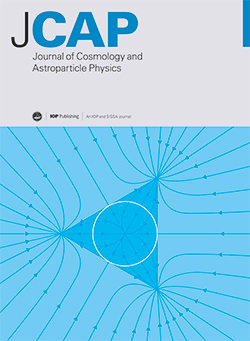DESI2024: Dark Energy Spectroscopic Instrument (DESI) survey, presentation of Year 1 results
IF 5.3
2区 物理与天体物理
Q1 ASTRONOMY & ASTROPHYSICS
Journal of Cosmology and Astroparticle Physics
Pub Date : 2025-01-30
DOI:10.1088/1475-7516/2025/01/123
引用次数: 0
Abstract
The series of papers included in this special issue represent the first cosmological measurements from the Dark Energy Spectroscopic Instrument (DESI). These papers present the validation of the DESI clustering catalogs, the methodology for the cosmology measurements, and the full cosmology implications. These measurements were derived from a catalog of approximately 6.4 million extragalactic sources in a redshift range of 0.1 < z < 4.2. Owing to advances in fiber positioner technology and to a larger telescope, this sample was acquired in only one year of observation, yet is more than double the size of the galaxy and quasar samples from the first four phases of the Sloan Digital Sky Survey (SDSS) that spanned 20 years. With these new galaxy and quasar catalogs, the DESI collaboration completed percent-level constraints on the cosmic expansion history and the growth of structure. In turn, these new measurements provided a new platform from which to test the equation of state of dark energy, the summed mass of the three neutrino mass eigenstates, global curvature, and General Relativity. By surpassing the precision of the previous generation spectroscopic survey, the results in this special issue mark the transition in the field of cosmology to Stage-IV dark energy science.求助全文
约1分钟内获得全文
求助全文
来源期刊

Journal of Cosmology and Astroparticle Physics
地学天文-天文与天体物理
CiteScore
10.20
自引率
23.40%
发文量
632
审稿时长
1 months
期刊介绍:
Journal of Cosmology and Astroparticle Physics (JCAP) encompasses theoretical, observational and experimental areas as well as computation and simulation. The journal covers the latest developments in the theory of all fundamental interactions and their cosmological implications (e.g. M-theory and cosmology, brane cosmology). JCAP''s coverage also includes topics such as formation, dynamics and clustering of galaxies, pre-galactic star formation, x-ray astronomy, radio astronomy, gravitational lensing, active galactic nuclei, intergalactic and interstellar matter.
 求助内容:
求助内容: 应助结果提醒方式:
应助结果提醒方式:


